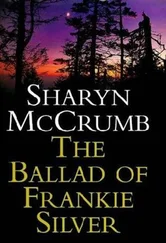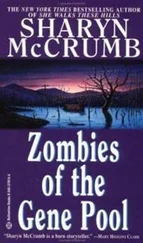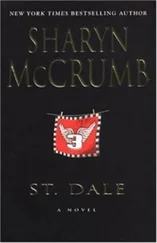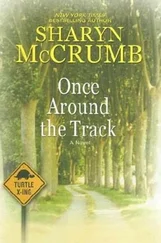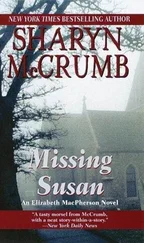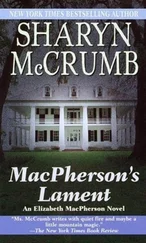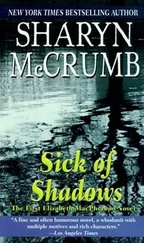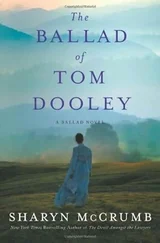She had expected Bill to be chagrined by this declaration, but he still looked as eager as before. “That’s all it says, isn’t it?” he asked, grinning.
“That’s all,” Powell replied. “I should think it was quite enough.”
“No, it’s great!” Bill insisted. “It says ‘all persons… are citizens,’ and so on.”
“Yes. So?”
“So what is the legal definition of a person ?” A. P. Hill had opened her mouth to explain the obvious to him, but Bill waved her into silence. “That’s where we insert our argument. What is a person ? Is a person just a vocalizing primate, or does it mean any sentient being who happens to be here? Citizens don’t have to speak English. They don’t have to be able to walk, or even talk. And the fifteenth amendment guarantees equal rights for all persons regardless of race, color, or previous condition of servitude. I remember that one.”
“It’s bound to be on the books somewhere,” muttered a badly flustered A. P. Hill. “Somewhere it’s got to say that a person is a human being, a member of the species Homo sapiens.”
“Doesn’t matter!” said Bill. “The definition got expanded twice before: once to include black men, and once to include women. Maybe this is an idea whose time has come.”
“Bill, this isn’t something that should be tackled by a small law firm in Danville. Surely the ACLU with all their resources ought to be the ones to handle this.” And to appear on Oprah and Geraldo , she finished silently.
For a moment Bill hesitated before his enthusiasm carried him away again. “I took the case,” he said. “And I’ll see it through.”
“Bill-”
“Unless it gets horribly expensive and time-consuming, and then I might turn it over to them.”
“Fair enough,” said A. P. Hill. “Now let’s talk about your other client. The one who’s in jail for first-degree murder.”
Elizabeth MacPherson wondered if the air-conditioning in the medical library was malfunctioning. Either that, or she was coming down with something. One minute she would be bathed with sweat, and the next she’d feel chilled to the bone. Her joints ached, too, now that she thought about it. That might be the result of all that tramping around through the cemetery and the Morgan house that morning, but a summer flu seemed the more logical alternative, because her stomach felt queasy, too.
These symptoms had come on slowly as the afternoon progressed, but Elizabeth fought against them. If she had not driven so far to use the library in Charlottesville, she would have given up at the first sign of queasiness, postponing her search for another day, but as it was, quitting now would mean that she would have to make another five-hour round-trip drive at a later date. That seemed such a waste of time and gasoline that she did her best to ignore the symptoms of an oncoming flu. She resolved to concentrate on the search instead of her abdominal cramps.
My illness does set the tone for the research, she thought, trying to tough it out.
Elizabeth was reading up on arsenic in the library’s medical texts. To be thorough she had skimmed the section on the history of the use of arsenic as a method for murder in the Middle Ages, when it had been the toxic substance of choice among villains. In those days arsenic was popular for three reasons: (1) it was easy to obtain; pharmacies sold it for rat poison, flypapers, and weed killers; (2) its symptoms could be mistaken for those produced by natural causes; and (3) it was easily dissolved in food or drink, yet it could not be detected by taste. When used as a poison, arsenic was usually in a white powder form: arsenic trioxide (As 2O 3). In the days of the Borgias, arsenic might have passed for natural gastric distress, but in later years a tox screen (if the medical examiner thought to request one) would turn up arsenic in a corpse’s vital organs. Nevertheless, each year a significant number of traditionalists continued to use it. Chevry Morgan’s liver had been full of it.
The text went on to say that arsenic poisoning had once been so popular among the homicidally inclined that laws were passed prohibiting the manufacturers of embalming fluid from using arsenic in their products. Very sensible of them, thought Elizabeth. It would certainly bugger the autopsy results. During the embalming process the fluid-fixative replaces blood and permeates the viscera; if the embalming fluid contained arsenic, it would be difficult to tell whether the poison had been introduced into the body after death-or before. At least defense attorneys would have seized upon the point to argue a reasonable doubt, and scores of murderers might have got away with their crimes.
Elizabeth had just begun to wonder when the arsenic-free embalming law had been passed, and what they used in the stuff now, when a wrenching abdominal cramp sent her tottering toward the rest room. Typical, she thought as the walls spun around her. The room was full of medical students, and not one of them noticed that I was ill.
She spent twenty minutes in the ladies’ room, throwing up and trying to regain control of her body. Many paper towels later, she emerged, pale and shaky, but determined not to give in to a summer virus, or, she was beginning to suspect, food poisoning. “The eggs on the breakfast buffet,” she muttered to herself as she sat down again in front of the pile of books. But now that she had vomited, she was probably over the worst of it.
Because Elizabeth wasn’t sure how much longer she could hold out against infirmity, she decided to skim through the rest of the introductory material. “Arsenic as medicine,” she whispered, stabbing a forefinger at the wavering lines of type. In the nineteenth century arsenic preparations were often used as additives to patent medicines. A topical preparation of arsenic was recommended as a cosmetic for women, because it whitened the skin, and some upper-class gentlemen took arsenic as a tonic, believing that it was an aid to virility. It was known to have been prescribed by physicians as a treatment for malaria and other protracted illnesses in that era; however [the book cautioned], once a person became an arsenic-eater, whether from personal vanity or doctor’s orders, he became addicted to the substance, and his body developed an increased tolerance for higher dosages. An attempt to cease taking the drug would produce violent stomach pains and the agonies associated with any poison victim. Elizabeth was trying to see through her headache to copy down a most interesting footnote, quoting from an 1885 edition of Chambers Journal of Popular Literature, Science, and Art , when the page blurred and began to waver, and the last thing she remembered was a spinning thought about Lucy Todhunter’s method of murder.
Her head hit the wooden study table with a crash, and several medical students actually looked up from their reading.
A. P. Hill was pacing the floor as usual. “I hope your sister comes up with something useful in the Morgan case,” she told her partner, “because you’ll never get Donna Jean out on bail, and I won’t have much time to help you with the case.”
“Why not?” said Bill. A. P. Hill loved murder cases, so her announcement surprised him. He decided not to be offended that she had assumed he’d need assistance from her; she was probably right.
“I’ve decided not to use any more delaying tactics on the Royden trial.” Powell’s face took on that greenish tint that usually accompanied the thought of Eleanor Royden, and she reached for the bottle of pink antacid.
“I thought you said that defense lawyers ought to delay trials as long as possible so that people will forget the victims and the gory details of the crime. You said there was less emotion involved in a trial if you could stall for a year or so.”
Читать дальше

